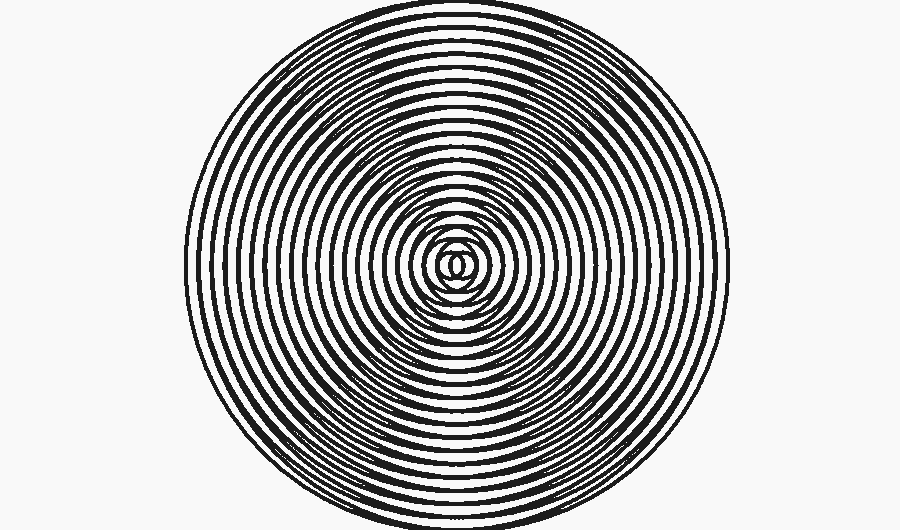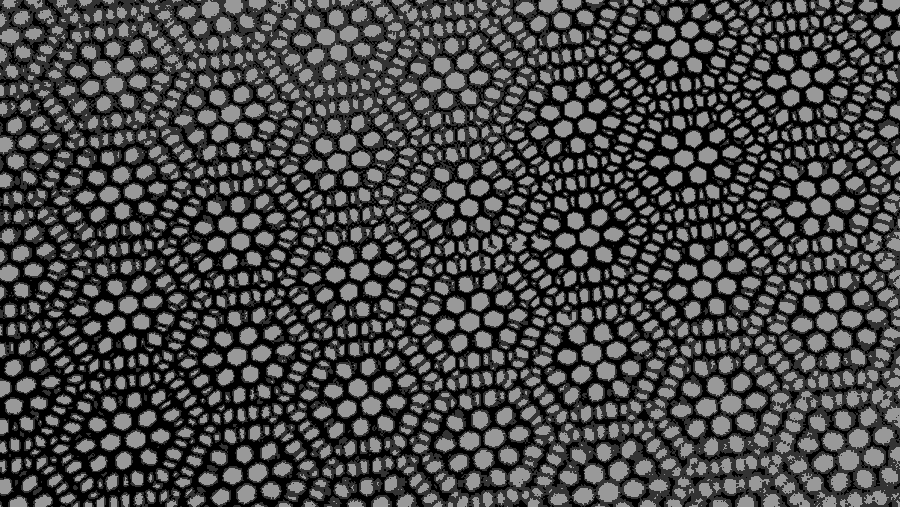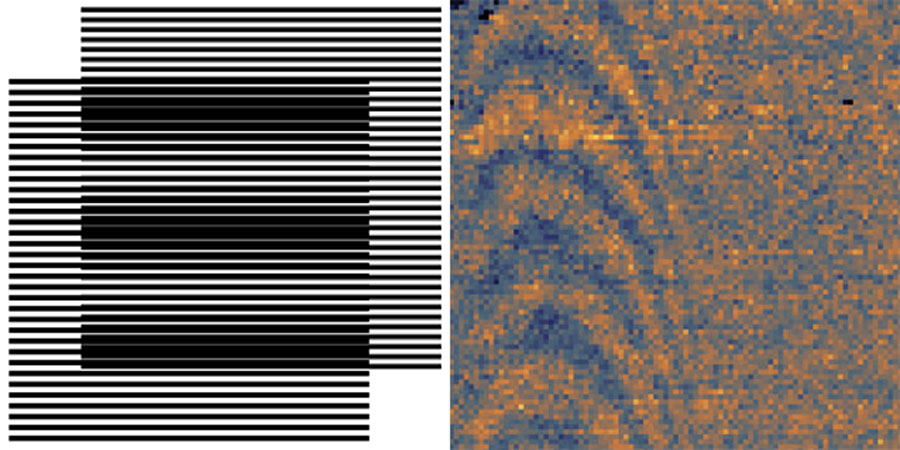Moiré Patterns Reveal Materials' Hidden Properties

An animated gif showing a Moiré pattern generated by two overlapping sets of concentric circles.
Public domain
(Inside Science) -- Moiré patterns, named after the wavy-looking French fabric, are the mesmerizing dark bands you see when looking through layered fences or when taking a picture of a TV screen. More than just a visual illusion, the underlying geometry of Moiré patterns has a wide range of applications, from special beacons that guide ships into port to anti-counterfeiting designs on paper money.
Materials scientists have explored this geometrical oddity and discovered new physics in the nanoscopic world. In 2018, an international group of researchers found that by stacking two layers of graphene on top of each other with a "magical" offset angle of 1.1 degrees, superconductivity would arise in the stack as a result of the generated Moiré pattern. This possibility to find new useful properties of existing materials -- simply by stacking them with a twist -- has spiked a wave of interest in the world of what is now known as "twistronics research."
A tiny twist
In the case of graphene -- a special kind of carbon with each layer just one atom thick -- hexagonal islands that arise in the Moiré pattern generated by the right twist enable the electrons to move around freely with zero resistance -- the hallmark of a superconducting material.
"When you take a monolayer material and stack it on another monolayer with a small twist angle, you end up getting a Moiré pattern, and what that Moiré pattern ends up doing is it modifies the potential landscape," said Kyle Seyler, a physicist from Caltech in Pasadena.
In general, when lattice materials are overlapped with a small twist, the resulting larger Moiré "superlattice" creates a different landscape for electrons to move around.
Since the graphene discovery, researchers have extended their study of Moiré patterns to other materials such as semiconducting monolayers that can be manipulated to emit specific wavelengths of light. The researchers have their eyes set on potential applications from solar cells to LEDs.
But there is another twist to how Moiré patterns can be exploited. In addition to using them as the Midas touch to create materials with new properties, scientists can also take advantage of the predictable geometry of these patterns and turn them into detective tools for studying existing materials.
Deductive detection
Here's a thought exercise. Imagine having two globs of paint, one red and one of an unknown color, and when you mix the two, the overall color is purple. What is the color of the mystery paint? (It's blue.)
A similar principle can be applied using the geometry of Moiré patterns -- if you know the pattern of one of the layers and the overall Moiré pattern, you should be able to deduce what the other layer looks like.
"What we have here is a tool for discovering things that cannot be seen using conventional microscopy technique," said Mengkun Liu, a physicist from the State University of New York at Stony Brook and an author of a Nature Physics paper that used Moiré patterns as a way to discover the hidden, fine-scale structure of a material.
"If you know the periodicity of the substrate, and you put the material you want to measure on top of the substrate, then you can infer from the overall Moiré pattern what is the periodicity of the material you put on the substrate," said Liu.
Since the Moiré pattern created by two overlapping grids is always larger than that of each of the layers, one can use this deductive method to detect details beyond the resolution limit of instruments. While Liu and his group were not the first to come up with the idea, they were the first to use this to study 3D materials, specifically in transition metal oxides.
"[Transition metal oxides] are a huge class of materials. And people are interested in studying them because it may lead to all sorts of advances in our knowledge, such as understanding the mechanism for high-temperature superconductivity," said Seyler, who was not involved in the Nature Physics paper. "They're also not 2D like graphene, which you can peel and stack easily. For 3D materials, it's not obvious how you would create a Moiré pattern as you would for 2D materials, and it's cool that they figured out how to do that."
"For a while, people have been investigating this in 2D materials, and ever since superconductivity was found in these Moiré superlattices in graphene, the whole field became very popular," said Xinzhong Chen, a physicist from Stony Brook University and another author of the Nature Physics paper.
The work of his team on Moiré patterns in 3D materials was almost accidental though, he said. "We were making the material but initially, we were not expecting to see this Moiré pattern."



